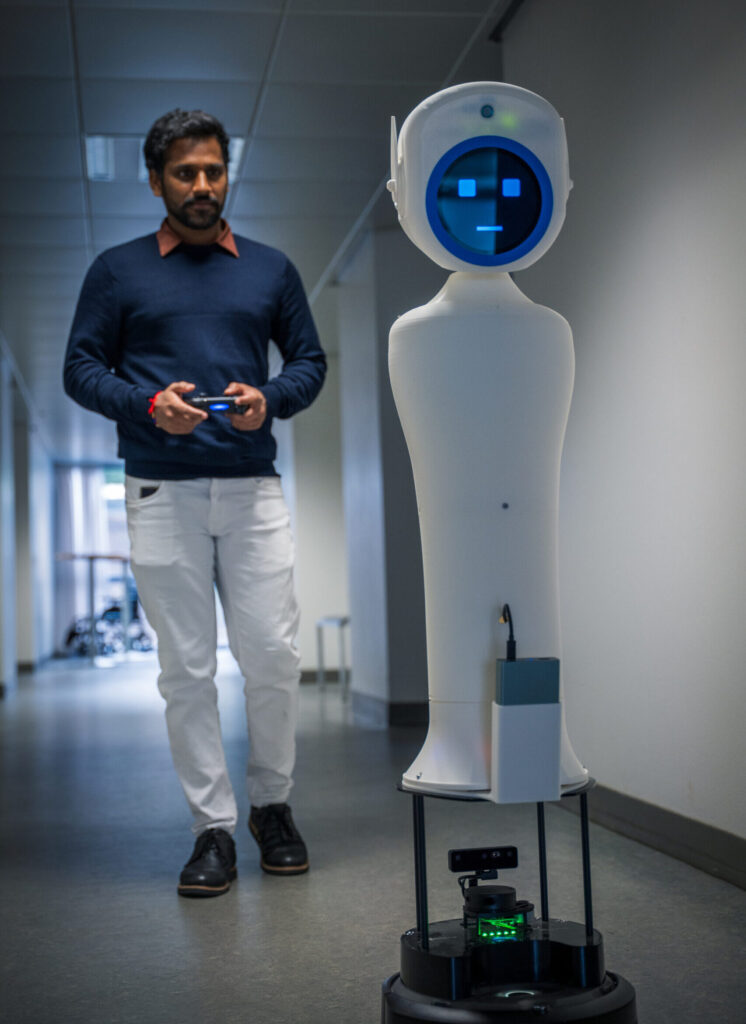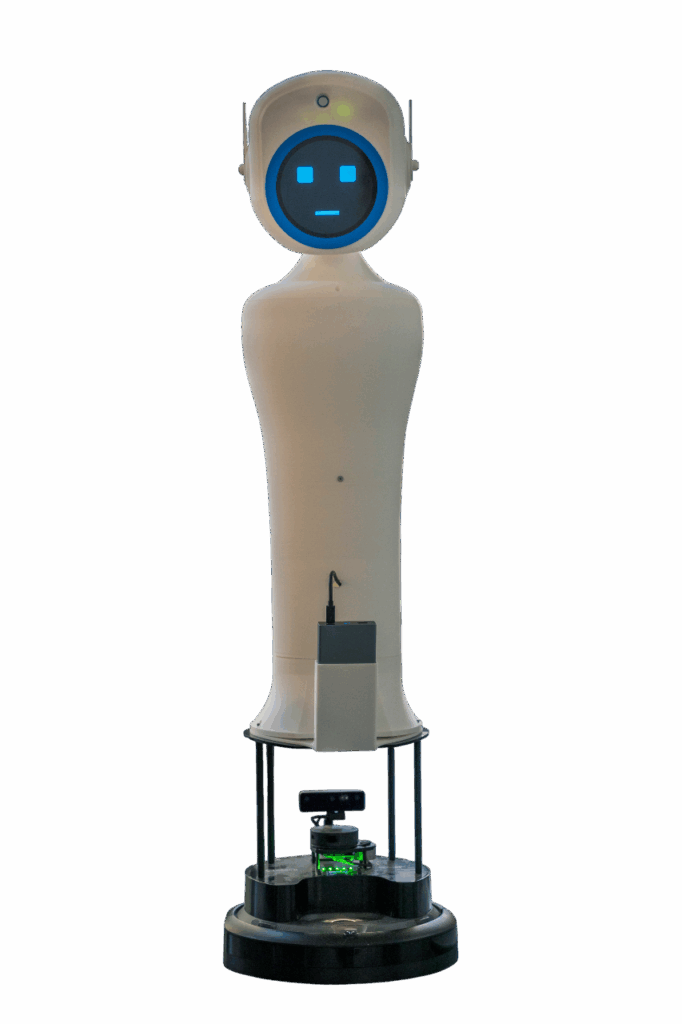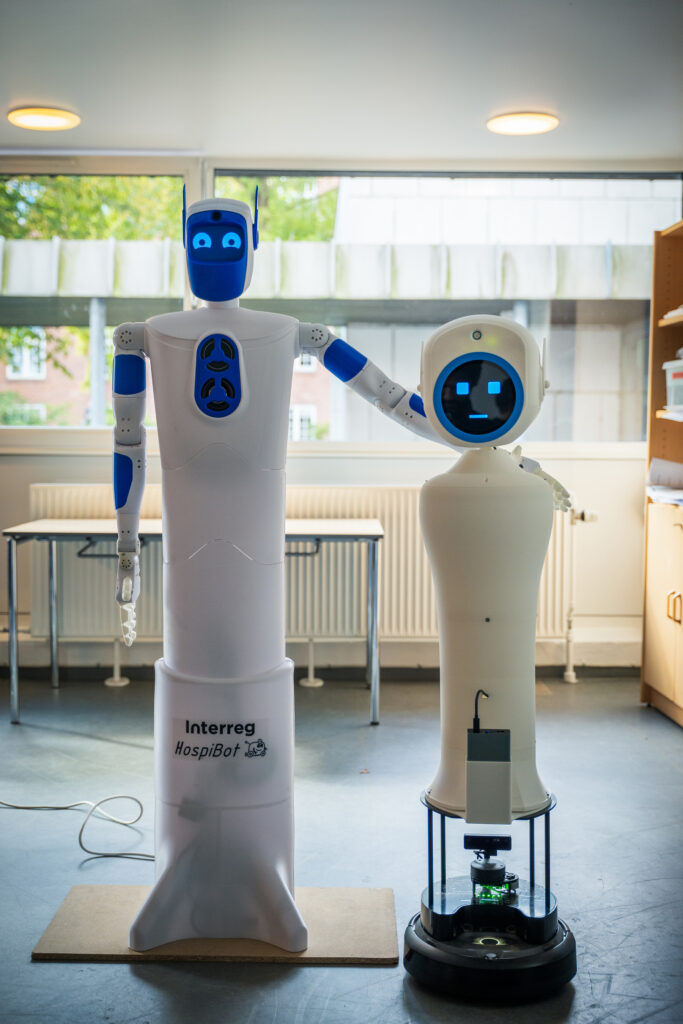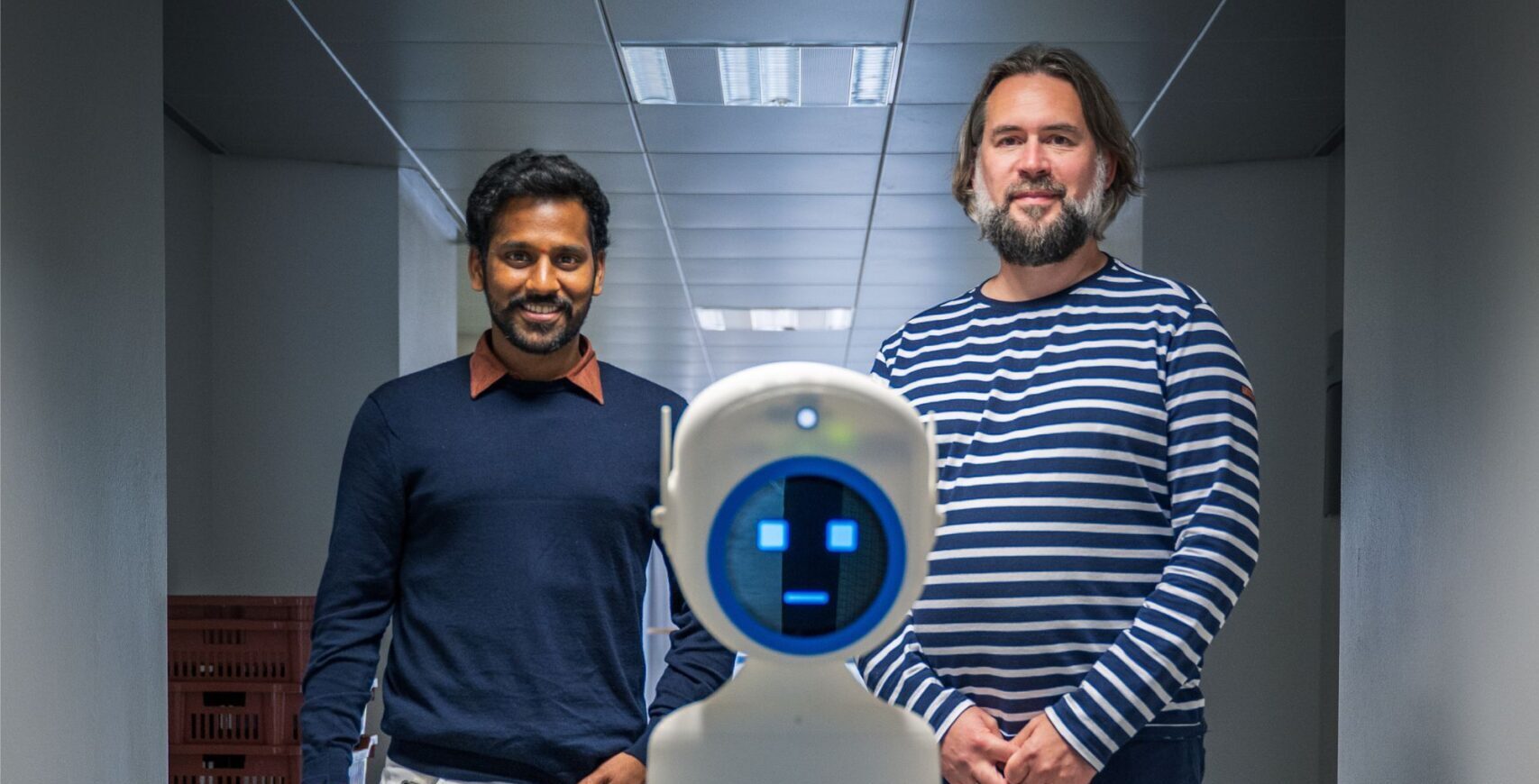Did you know that hospital staff is patrolling stations at night to check if everything seems normal? It’s a non-medical and time consuming task. Robert Wendlandt and Chandrahas Kasoju from the University Hospital Schleswig-Holstein in Luebeck are developing a robotic solution to relieve staff from this repetitive task. “Tele” is supposed to take over patrolling, detect emergencies and respond appropriately. Find out about how Tele operates, which functions it contains and how data protection is ensured.
Which purpose is Tele developed for?
The central use case for developing the robot is the detection of vulnerable individuals in a hospital. That could be a person lying unconscious on the floor or someone who has stopped breathing. Tele is designed to contact hospital staff immediately if an emergency is detected

How can Tele support hospital staff?
Tele is supposed to alleviate the workload of nurses, especially during night shifts when staffing is often limited. It can support them by taking over security patrols, which is a crucial but non-clinical task in the hospital. It will detect critical situations and alert staff, acting as an extra set of eyes. This allows nurses to spend more time on direct patient care. We are also working on the function for remote consultations. That way Tele can facilitate video calls between doctors and patients and enable quick consultations.
How does Tele detect emergency situations without compromising on patient privacy?
Tele has a thermal camera and radar sensors built in to scan its environment. Those data is fused to detect actual emergencies. By using a thermal camera instead of a regular RGB camera for its primary sensing, the robot only detects heat signatures. This allows identifying a person’s presence or if they have fallen, without capturing identifying visual details. The supplementing radar provides a 3D point cloud to detect obstacles, people, and motion while also respecting privacy.
What inspired the robot’s design?
The design of Tele was inspired by the functionality of a telescope as well as the need for telepresence. It’s name reflects the robots ability to extend and retract its height like a telescope and to provide a remote presence for security and communication purposes in the hospital. By adjusting its height Tele can engage with a wide range of people on eye-level, whether they are children, standing adults, or patients in wheelchairs or in beds. Furthermore, the adaptability ensures that the interactive screen, camera, and microphone are positioned at a comfortable and appropriate level for video calls and other interactions.

*please notice: the telescopic design of Tele is temporarily changed. We will update the articles photos as soon as Tele has it’s telescopic body back!*
What have you found most challenging about developing the robot so far?
What's coming next for Tele?
Next big step for Tele is to be tested in a real hospital environment. Before the robot is ready for full-scale testing, there are two key developments needed. First, we need to integrate the screen, camera, microphone, and speaker as well as developing the user interface and software for video calls. Second, we will improve the robustness of the sensor solution. This involves refining the data fusion algorithms to improve the accuracy and reliability of the emergency detection system, ensuring it is dependable for a hospital setting.

About the author

Chandrahas Kasoju
I am developing the patrolling module 'Tele', which is a service robot designed for healthcare environments. My research focuses on equipping the robot with an effective multi-sensor perception system—combining technologies such as radar and thermal imaging. My ultimate goal is to design and build a fully functional mobile robot capable of autonomous patrolling, situational awareness, and intelligent decision-making through behavior integration.

Robert Wendlandt
I’m part of the payload development team. Our goal is to create the payload modules matching a unique demand in hospitals. We aim to relief hospital staff from non-medical and routine tasks to give them more time to take care of the patients.

Wiebke Behrens-Focken
Hi! Im part of HospiBot’s external communications team. My aim is to make the complex work behind our research project understandable and accessible to a broader audience. That way I can raise awareness of intelligent technologies like robots, foster trust in their use, and encourage public dialogue about their role in healthcare and society.

